We had the same picture as so many others at the start: we envisioned a perfect, beautiful, raven-haired little girl from China.
When we started exploring adoption and saw that the face of adoption had really changed to be all about special needs, we shifted our thinking. Minor, correctable needs, we thought. Our perfect, beautiful, raven-haired little girl from China will have a few minor, correctable needs that we will work through with some therapy and maybe a surgery.
We left ourselves open to a lot of needs. Not all were towards the “minor” end of the needs scale, but none were past what we considered to be moderate. We certainly didn’t include any major needs, at least according to the checklist.
Then we sat back and waited to be matched. We had heard the wait time was stretching longer and longer, and we prepared to wait for a year or longer to be matched. We didn’t even hurry to start on our dossier paperwork, figuring that we should hold off so we wouldn’t have to do updates if the wait was longer than we thought.
We got the call less than two months after we turned in the checklist. A perfect, beautiful, raven-haired little girl in China was matched with us.
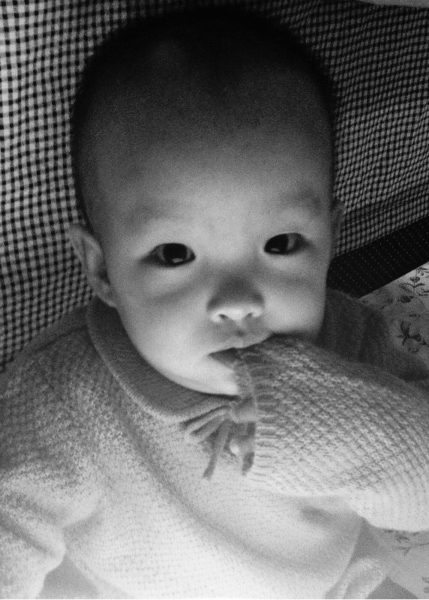
Her needs were spina bifida and hydrocephalus. The latest information they had on her was four months old at that point. We consulted our pediatrician, who thought this little girl looked good, but recommended that we ask for an update and look for four things in it: could she walk, could she talk, could she grasp things in her fingers, and could she clap.
So we asked our agency if they could get us an update. They said they would ask, but that most people who requested an update didn’t get one and ended up having to make their decision based on the information that they received with the match.
We got an update the next day. It had lots of information and several pictures. And when we read through the reports and saw what was in the pictures, we got chills. There was a picture of her cruising furniture, one of her holding an object between her fingers, and one of her mid-clap. In the report, it said that she was speaking and listed several words that she could say already, even just having turned one.
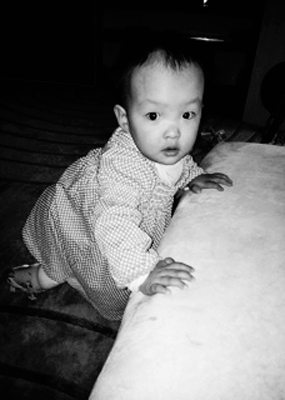
When we requested the update, we had not asked for any specific information, just for anything more recent. Yet we had evidence of each of the four things that our pediatrician told us to look for. We had our sign.
No matter the diagnosis, this girl was ours.
But to be honest, part of me was still nervous. I talked to two mothers who had brought kids with SB home from China to hear what their experiences were, and they varied a lot. SB is called a snowflake disease – because no two cases are alike, you never really know how each individual is going to be affected.
What we were most concerned about was mobility and toileting needs. We had two boys at home, and at the time they were five and three. “Fast” was the only speed they knew.
Would they be able to slow down to accommodate a slower sibling?
What if we had to change the way we lived our lives to accommodate a child that couldn’t use the bathroom in the same way as our other kids?
But I buried my fears and kept plowing ahead. We got sporadic updates and pictures, and she looked happy and healthy.
We found ourselves in China later that year in a room with many other anxious soon-to-be parents waiting for their children to show up. And then all of a sudden there she was – our perfect, beautiful, raven-haired little girl.
The questions both faded and magnified at the same time.
They didn’t matter, and they were everything.
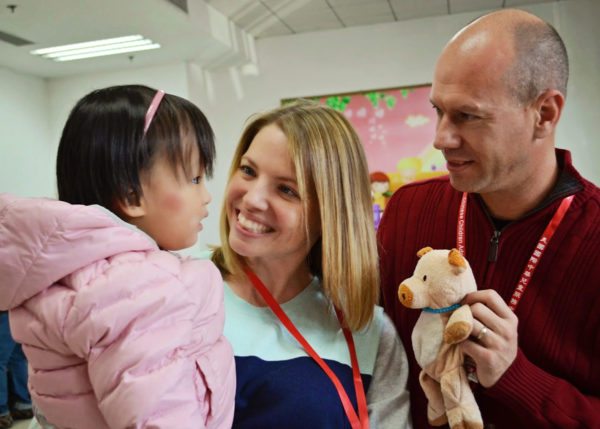
I knew that I loved her no matter what, and that love made me realize immediately that I would do whatever she needed to be happy and healthy. We just had to learn what “healthy” looked like for her.
When we got home, we had the usual battery of doctor appointments and tests and consultations to try to get to the bottom of all of the physical stuff. She was put in physical therapy within a few months and was fitted for braces.
We worked hard to get her a walker, which she used for two weeks before she decided that she could go farther faster without it and ditched it.
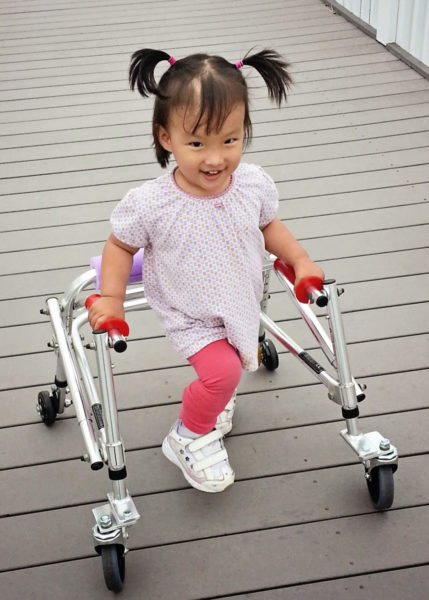
Two years after we got home, when our daughter was four years old, we found ourselves facing the reality that she would need bowel and bladder management programs, likely for the rest of her life. Although we had hoped that she would be one of the few SB kids who doesn’t have to deal with those, it had become apparent that she needed both in order to stay healthy.
And to be honest, we spent a little time mourning the loss of normalcy in terms of how we would need to care for her, and how she would need to care for herself for the rest of her life. But when we looked at the whole picture, we realized that there is more than one definition of the word normal – we just had to learn a new one. It might not be easy, but anything is worth it when it comes to our daughter’s health.
So we educated ourselves about it and we quickly made her toileting needs a part of our routine so that our daughter would understand that these two things were part of her life forever now. We told her they were not a big deal and we treated them that way; they were just things she had to do to stay healthy.
And as we explained them to her that way, we realized that our mindset has completely changed, too. We had gone from people who were worried about bathroom habits and mobility issues to people who just did what we had to do to keep our daughter healthy.
What we came to see was that we had been afraid to inconvenience ourselves. We were afraid to make changes to our comfortable lives in order to accommodate needs that didn’t always fit into the comfortable routine of our old definition of a normal life.
Sometimes what society says is a big deal is really just a bump in the road.
Fast forward another year, and we are bathroom pros. We’ve given enemas in hotel bathrooms, auto repair shops, and relatives’ homes. Our master bathroom is where our daughter does her daily enema routine and her supplies fill the cabinet above the toilet. We’ve cathed into a diaper in the car, in countless restaurants, at birthday parties, and in airports. It’s just what we do.
In addition to catheters and enemas, leg braces and devices that assist with her mobility will always be part of our girl’s life. She needs that extra support to help her walk correctly and keep everything aligned right. We go to bi-annual clinic appointments and get new braces at least once a year. We go to weekly PT sessions and biweekly OT and vision therapy appointments. We’re working hard to get her settled into the public school system so she can start kindergarten with her friends in the fall.
We know that we will likely continue to have to teach her to be okay with what her normal is. Let’s face it….it’s a lot easier to deal with this as a preschooler than it will be in junior high. But we believe that building up her confidence now and helping her to understand that these toileting needs are just part of what she needs to do to stay healthy will help her keep perspective too.
We started out looking for the perfect, beautiful, raven-haired little girl from China.
And she is.
“Perfect” does not mean that every part of her body functions like it should.
“Perfect” means that her spirit is soaring, she fits beautifully into our family, and she is the realization of our dreams.
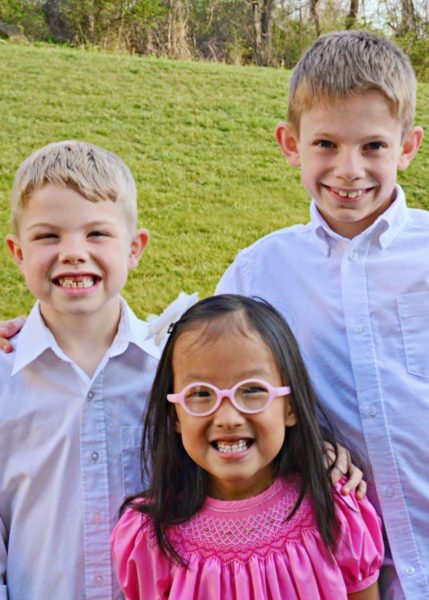
And now we find ourselves in the middle of the journey again. This time our son waits for us – a perfect, beautiful, raven-haired little boy who also happens to have spina bifida.
We recently received an update on him, and it noted that he was now using a wheelchair to get around. This was something that had not been in his file previously, although we knew that he definitely had mobility issues.
And with this new information, I felt the old fears returning.
We can do a walker and braces, but could we handle a wheelchair?
We have stairs in our home. Will he be okay with them?
Can we give him all that he needs to have the best life that he can? Have we taken on too much?
The difference is that this time, I was ready to face the doubts.
We can handle it.
We’re not naïve; we know that this likely means lots of different adjustments to our lives that we hadn’t necessarily thought that we would be facing, at least not quite so soon.
But the difference is that we are changed people.
We have changed from people who were afraid of inconveniencing our lives with some extra routines to people who would do anything to keep our children healthy and happy. The idea of a wheelchair no longer intimidates or scares us. Instead, it’s just making us learn another new definition of the word normal.
Our now-five-year-old daughter is both healthy and happy. She radiates joy. She bosses her brothers around (complete with hands on her hips), is adored by her teachers, plays t-ball, loves to laugh, go in the pool, and would do art projects all day if you let her.
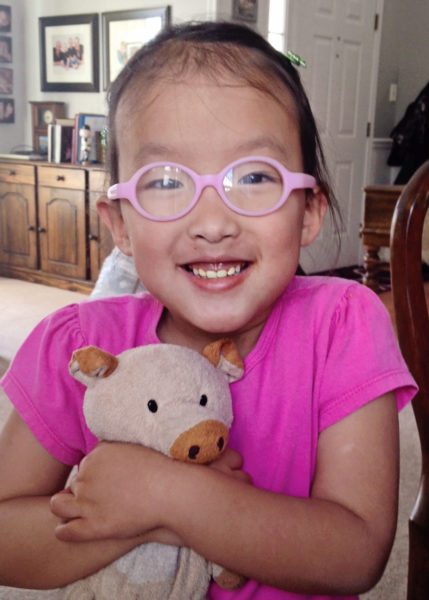
And if the radiant smiles in the pictures and videos we have received of our new son are any indicator, he is thrilled with his new wheelchair and how it allows him to participate so much more in his life.
I do not mean to encourage anyone to accept the file of a child who has needs beyond what they truly believe they can handle. There are definite lines in the sand for all of us, and knowing yours is the best place to start when you’re considering bringing a child into your family for forever.
But don’t close yourself off to a child whose needs are different than something you might have considered before. There are so many children who wait because people are afraid the child’s needs might inconvenience their lives.
The sacrifices that we make for our children – all of us, no matter what special needs our children have – demonstrate that some inconvenience now is worth the price when it comes to giving a child a permanent place in a family who will love him eternally.
– guest post by Kelly

























HI KELLY,
I HAVE ALSO ADOPTED A CHILD WITH SB AND WOULD LOVE TO CHAT WITH YOU, AS WE HAVE FACED THE SAME STRUGGLES AND UNCERTAINITIES. PLEASE CONTACT ME AT YOUR CONVENIENCE. THANKS SO MUCH. MY EMAIL IS: janewillis81@yahoo.com
Wow! I commend you. Not many can turn around and define normalcy in their own word!
Hello! Beautiful message. My husband and I are almost loggin in in China and have been adding special needs to our list of what we’re open to. May I ask what kind of SB your kids have? Mylomeningocele? I’m trying to learn more about SB and several other SNs that we originally we’re too scared to consider. Thank you!